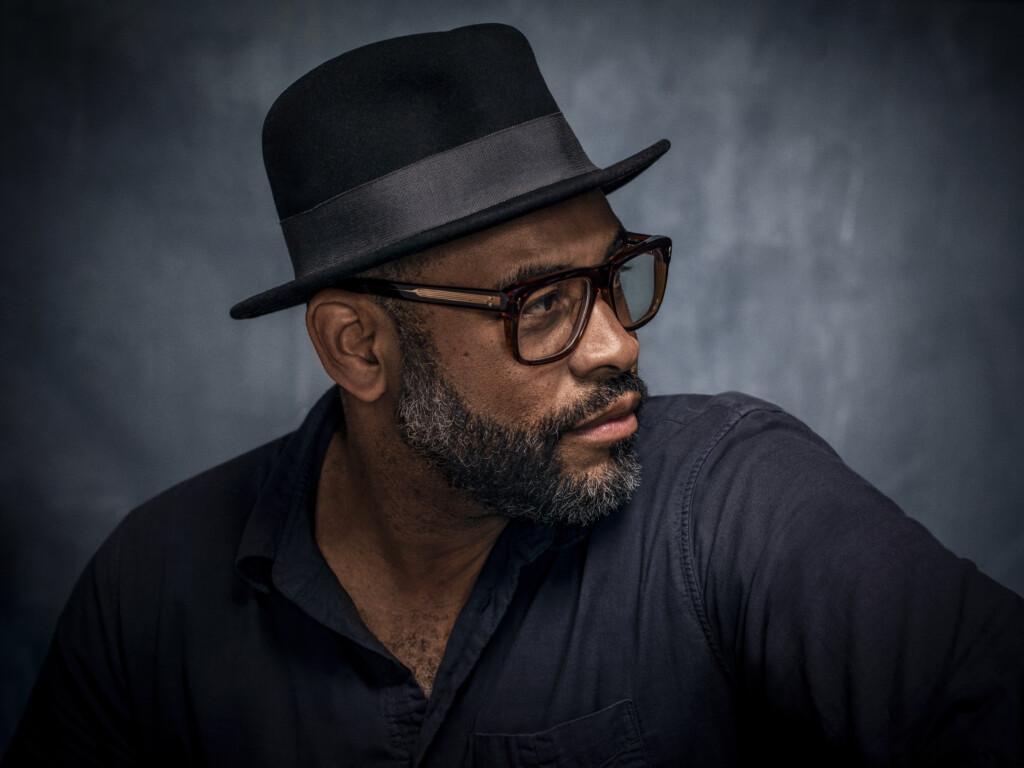Who would have thought that being an inquisitive young 12-year-old would lead to Kwaku Alston becoming a world-renowned photographer? Like most success stories, the origins of how he became the successful man that he is today, make for an interesting story. His mother inherited his uncle’s camera after he passed. One day Alston’s curious mind led him to his mother’s closet and that’s where he found the camera. Shortly after picking it up he dropped the camera and broke it. His mother told him he would have to take a class to learn how to fix it. It was his photography class in high school that helped Alston fall in love with the craft of photography.

For the West Philadelphia native, following his passion was a no-brainer. Although he knew what he wanted to do, Alston had “no idea how to become a fashion photographer.” It was his sophomore year at Rochester Institute of Technology that he thought he could actually pursue his dream and “dug deep.” It was in college that Alston gained an understanding of commercial and fine art photography. The rest is history as 25 years later, Alston is on top of his game.
“It has been a long journey,” Alston says about his career. “Research, but also understand your craft,” he speaks to how he creates the tone on his sets. The tone and environment that Alston is known for has definitely built his reputation. Alston has worked with brands such as The New York Times Magazine, Time, Pfizer, Coca-Cola and Target. Alston has also worked with media giants such as Universal Studios, Disney, Amazon, Sony Music and ESPN.
“You have to have that knowledge where you can fall back on your craft because anything could happen,” he says about being able to navigate life as a photographer.
Having longevity in any creative field is no easy feat, yet Alston has allowed the lessons he has learned to guide him in his craft. With technology becoming more and more a part of our daily lives, he leads by example on how to keep creativity alive. “Technology is just a tool,” Alston says about the changing times. “It comes down to your vision and what your concepts are. From there, find the right technology in order to manifest that vision.” Being at the crossroads of digital and analog shows Alston’s ability to welcome change while remaining true to his artistry.
Getting to this moment in his career has not come without hardships. “There are a lot of challenges in our society for people of color,” Alston says. “I knew I had to be good at my craft because I might not always get a second chance. Once I was through the door, I knew I had to kick butt and make sure I did the best job possible,” he explains. Alston’s mindset was that of unwavering strength. Where others may have folded because of the challenges that come along, he allowed those challenges to make him better. His position in the industry is not lost on Alston. He acknowledges that there are a lot of unspoken moments that are between the lines when it comes to art, culture, identity, and commerce when you are trying to make a living from photography. “When you get hired it is not always your vision. They want you to follow their vision.”
Even through challenges, Alston was able to work through them, and he hopes the younger generation is able to do so as well. The challenges that Alston endured made him grow in his career and has led him to capture iconic images of the cast of Black Panther, including the late Chadwick Boseman. He has shot Beyoncé, Donald Glover, and LeBron James just to name a few. Alston continues to be on the mind of Hollywood’s elite.
Artists can learn a thing or two from the trailblazer. It’s not unheard of for capitalism to get in the way of the true craft of art. For Alston, still finding joy in photography is his ultimate inspiration. With algorithms, the desperate need to “make it,” and the constant praise that comes with the new ways that art is shared, it is easy to lose track of the purpose of the craft. “It is impossible for an artist to create constantly,” Alston says. “You need time to live, breathe, and experience so you have something for your art.”
Community is how Alston maintained his “creative well of inspiration.” He knows the difficulty that comes with trying to put out work. “The most important thing is seeking out a community of other artists and creatives. You need mentors that you can call. That is everything in this industry,” he says.
Opportunities are there, and Alston takes advantage of where we are today. “I never thought I would be creating images that would represent culture,” he says when speaking on his legacy. “I realized the power of what I had when I saw the images that I shoot can have an influence on culture.” At 30, Alston made the decision never to create imagery that made him look bad. “It was important to show imagery of myself in a positive light, to help change the narrative of how people see us.”
Alston’s mission to change the narrative is rooted in understanding the power of images. He knows that images shape us. He also knows the power we have to shape and sign off on the images that affect our communities. “The sight sense is so powerful,” he says passionately.
At 51, next up for Alston is “retirement,” he jokes. The man behind the lens is ready to take on a mentoring role for young artists. He is ready to help usher in the next generation of photographers so they won’t make the same mistakes he has in the past. He knows that young artists need someone to help teach them, and he is ready to take them under his wing. In the end, Alston wants us all to “find our champions!”
Check out the full interview.
Photo Credit: Courtesy of Kwaku Alston
Check out The Quintessential Gentleman’s Power Issue below.





